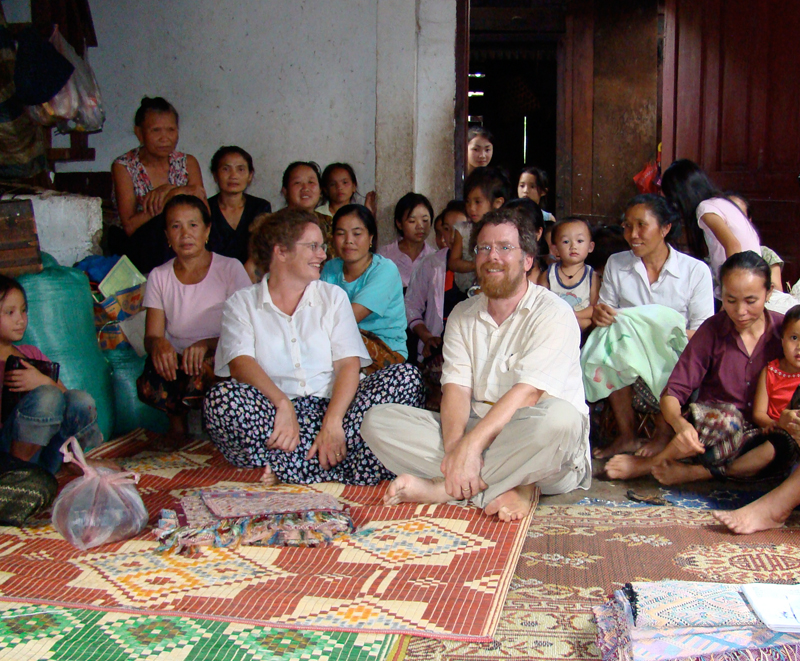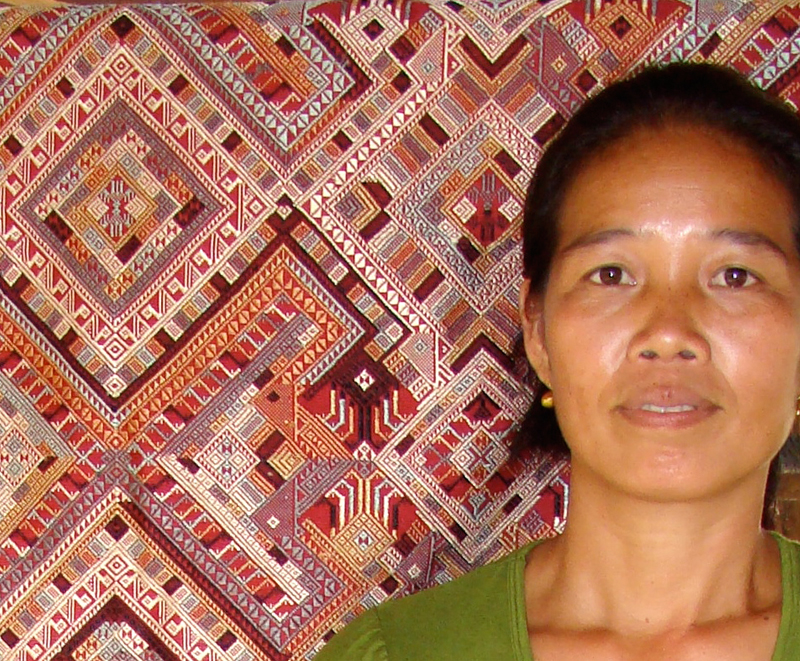The Artists
The Hilltribe Artists Of Laos & Vietnam
The artists represented at Above the Fray are a selection of the world's finest weavers, dyers and other creative artists, and they live in thehill tribe regions of Laos and Vietnam. These artists take great pride in their knowledge and expertise of traditional methods and materials, and they are an essential factor in the vitality of their peoples' traditional beliefs and customs.
The artists represent dozens of different traditions. Ancient migrations of people from China, Burma, Thailand, and Cambodia/Khmer have created a colorful and dense diversity. Each unique culture brought its own beliefs (including animism, ancestor worship, Taoism and Buddhism), its own language and customs, and its unique art as they settled in the remote, rugged Annamite Mountains of upland Southeast Asia in what is now Laos and Vietnam. For detailed information on the specific cultural groups of Laos and Vietnam, see our recommended books.
Sparsely-populated Houaphon Province in Laos alone has 22 ethnic groups, and Laos over 120. Vietnam offers dozens of other tribal traditions. Such dense diversity offers modern travelers a unique experience, as an hour's walk may take one from an Akha village, with its Tibeto-Burman traditions, to a Khamu village, with its Austro-Asiatic roots. A single local market may feature a Dzao cotton embroiderer next to Hmong hemp weaver next to Mien jeweler.
THE HILLTRIBE ARTISTS OF LAOS & VIETNAM
Of particular heart-felt focus for Above the Fray is Houaphon Province in northeast Laos where the Tai Daeng and Lao Loum people devotedly adhere to an ancient tradition of silk creation. The silk is locally-raised. The dyes are all-natural, created from the bark, wood, roots, leaves and bugs of the jungle. The weaving itself is done in small traditional villages on local, hand-made floor looms. These artists have spent a lifetime learning the art of raising, designing, dyeing and weaving these near-flawless sophisticated textiles, and the weaving process alone may take an artist 4 months. Traditionally, these complex textiles were used by shaman and villagers as a source of spiritual strength, protection, and healing. The effort creates powerful, unique shawls, scarves and wall art.
Sparsely-populated Houaphon Province in Laos alone has 22 ethnic groups, and Laos over 120. Vietnam offers dozens of other tribal traditions. Such dense diversity offers modern travelers a unique experience, as an hour's walk may take one from an Akha village, with its Tibeto-Burman traditions, to a Khamu village, with its Austro-Asiatic roots. A single local market may feature a Dzao cotton embroiderer next to Hmong hemp weaver next to Mien jeweler.
Of particular heart-felt focus for Above the Fray is Houaphon Province in northeast Laos where the Tai Daeng and Lao Loum people devotedly adhere to an ancient tradition of silk creation. The silk is locally-raised. The dyes are all-natural, created from the bark, wood, roots, leaves and bugs of the jungle. The weaving itself is done in small traditional villages on local, hand-made floor looms. These artists have spent a lifetime learning the art of raising, designing, dyeing and weaving these near-flawless sophisticated textiles, and the weaving process alone may take an artist 4 months. Traditionally, these complex textiles were used by shaman and villagers as a source of spiritual strength, protection, and healing. The effort creates powerful, unique shawls, scarves and wall art.
We also have special relationships with the Hmong and Dzao textile artists of northern Vietnam. Here the textile artists adhere to a tradition of making hand-spun hemp and cotton clothing and fabric, and the region is famous for its indigo dyes, batik work, and hand-embroidered textiles. In much of this region, the traditional wear is still their daily wear, although modern ways (and clothing) is obviously attractive to the younger generations.
A short lifetime ago, an expert in hill tribe woven art could view an item and, based on its design, motifs and colors, identify its specific valley or village of origin. In Laos, a woman's sinh (skirt) could also identify her age, marital status, husband's village, and level of wealth. But as modernization and national and international pressures have increased in the region, these cultural groups have intertwined with each other. Indeed, many modern weavers and basket-makers now share their motifs and designs with other ethnic groups; a few of the artists we have met proudly work to create new patterns based on tradition. Most, however, prefer to adhere to the ways of their parents and their parent's parents.
French colonization and the war in Laos and Vietnam in the 1960s and 1970s – fed with Chinese and American money and arms - forced the region's people into a complex world not supportive of minority traditions. The world's most intensive bombing campaign ever devastated the region - killing millions and poisoning the soil. Even today – 40 years after the bombing stopped – Laos and Vietnam lose hundreds of innocent civilians every year due to unexploded ordnance left from the Vietnam War. (See MAG.)
The war also opened the region to modern development. Many small isolated ethnic groups have struggled with transition; some have been relocated and forced to adapt to unfamiliar ways. Many belief – and textile – traditions have already been forever lost as pre-made western-design clothing and plastics have become readily available. The shaman's cure is giving way to antibiotics, and story-tellers are being supplanted by television. Cell phones are erasing isolation and subsistence farmers are being tempted by banana plantation companies and outsiders wishing to grow engineered corn for export feed. Today, many cultural groups are on the brink of extinction.
Ethnic minority artists, elders and others recognize that modern times are making many traditional beliefs and ways obsolete; there is deep concern that ethnic identity and elder wisdom is being forever lost. Perhaps the greatest weight for maintaining tradition falls on the artists who create and maintain the materials and methods, and thus the rites, associated with their ancestors' ways. Traditional daily life and traditional belief were - and still are in certain places - intricately and seamlessly woven together.
The artists weave more than fabric. They weave their culture and the values of their ancestors; they weave a pattern that has been maintained from before memory and is being enriched for all future memories. They uphold an ancient success, and chart the path for their people to realize a substantive and meaningful future.
Many of the weavers, basket makers, and other artists we represent have permitted us to take their picture. You can find these photos on individual gallery pages, and, when available, the photo is included with the textile's purchase. Many of the artists, however, deny our request for a photo either out of shyness or a belief that the photo may capture a portion of their spirit, leaving them vulnerable. Some pieces are also obtained through village cooperatives and markets, and the individual artist, perhaps working in the rice field, may not have been available for a photo. We will provide you with as much information about each purchased piece as we can.

Visiting a Lao Weaving Village
We approached Muang Vaen, a mid-sized weaving village of perhaps 60 homes, on a one-lane dirt road, 1-1/2 hours through the jungle from a paved "highway" and 3 hours west of the small city of Xam Neua. The village is on the side of a lush river valley – lush especially from August's monsoon and the extending rice fields.
Shaman and Healing Cloths
Shaman ("phaa phi mon") and healing cloths ("phaa sabai") are shawls that are worn and used by a shaman during any of a variety of healing rituals - from curing a physical injury, disease, or a mental illness to protecting a newly born baby or performing a fertility ceremony. The shaman, which can be of either gender, follow a complex tradition that includes elements of Buddhism, ancestor worship, and animism.
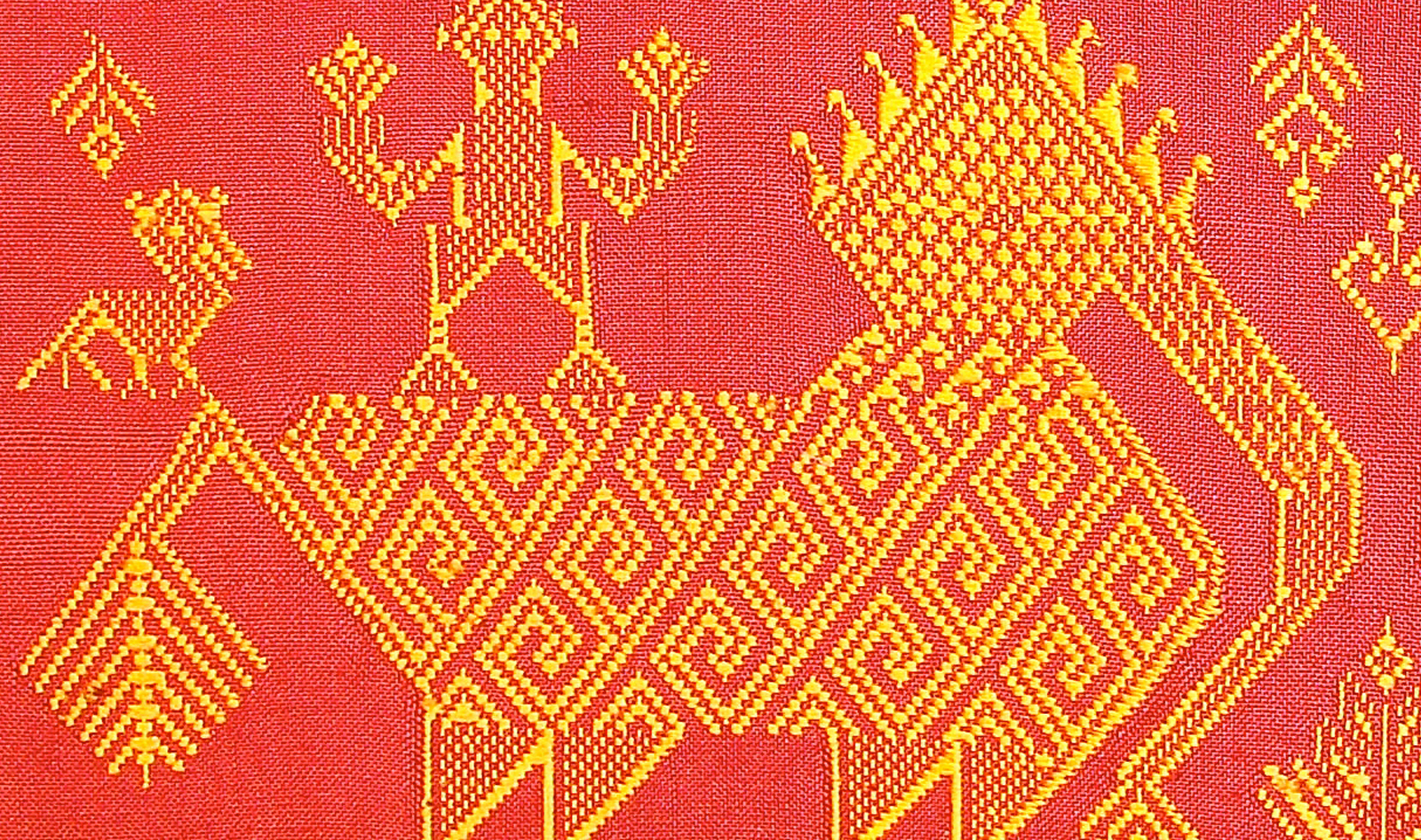
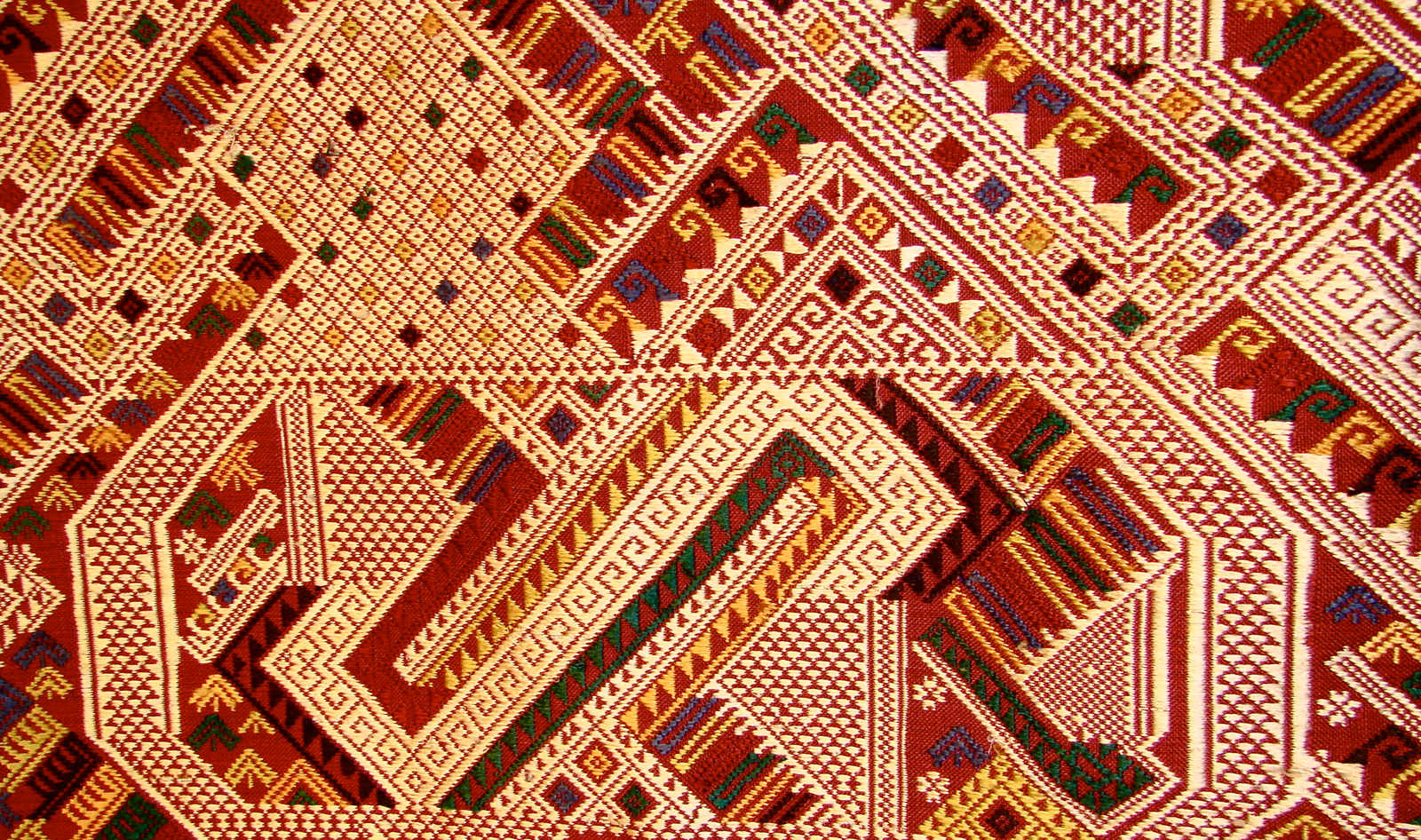
Motifs in Hilltribe Weaving Design
Many of the motifs are readily identifiable. However, in the shaman cloths, the motifs are not only "hidden" to the casual observer, but are also believed to be unrecognizable by spirits that may be causing illness or bad luck. The shaman can thus sneak the positive spirits needed for healing into a room on their clothing, and then, through ritual ceremony, unleash these hidden positive spirits of the cloth to dispel those spirits causing distress.
The Art of Natural Dyes
Despite the invention of chemical (aniline) dyes in the late 19th Century, thehill tribe artists represented by Above the Fray: Traditional Hilltribe Art largely use dyes and mordants exclusively derived from locally-collected natural materials and processed using traditional methods. The complex "recipes" for making these permanent dyes have been handed down for generations.
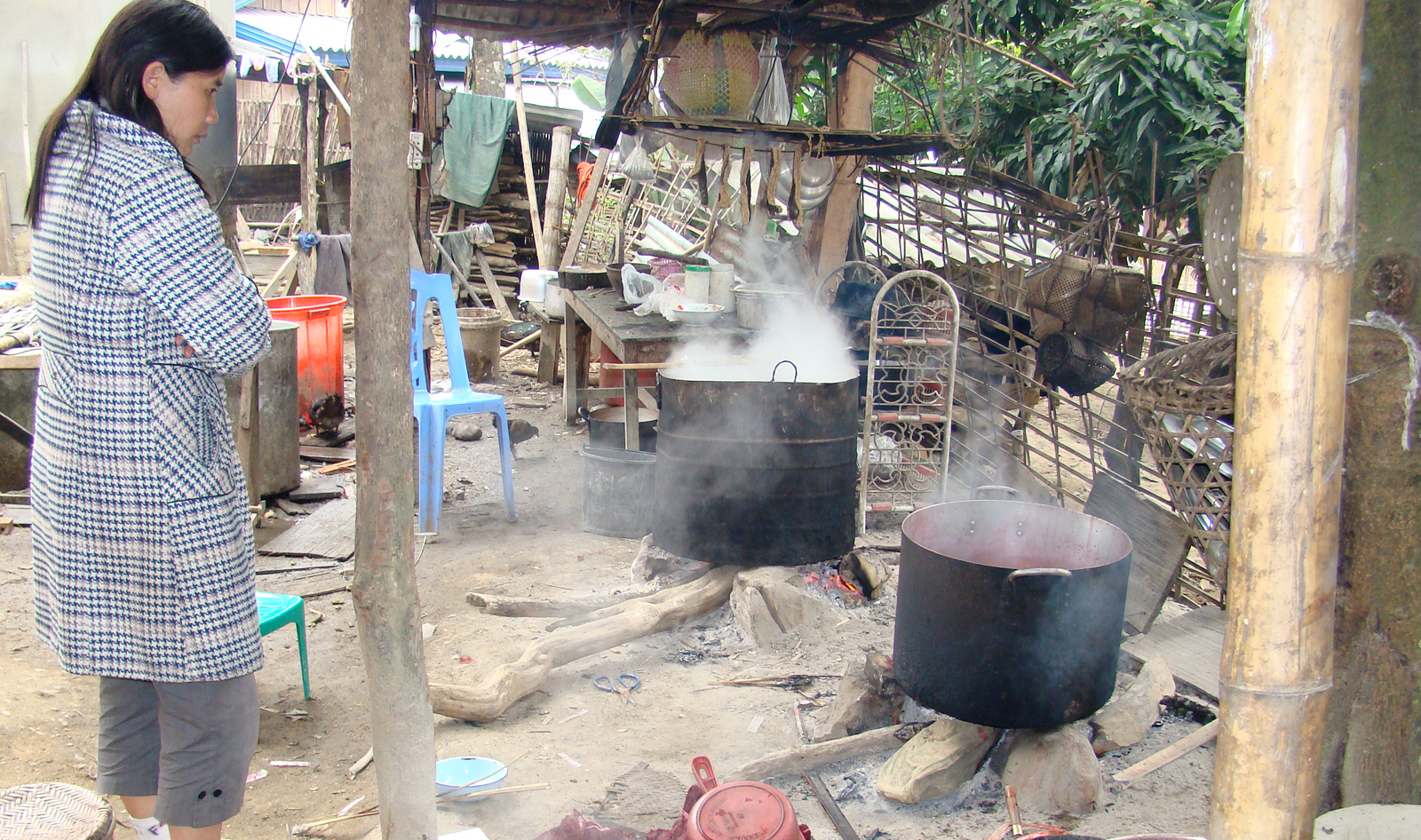
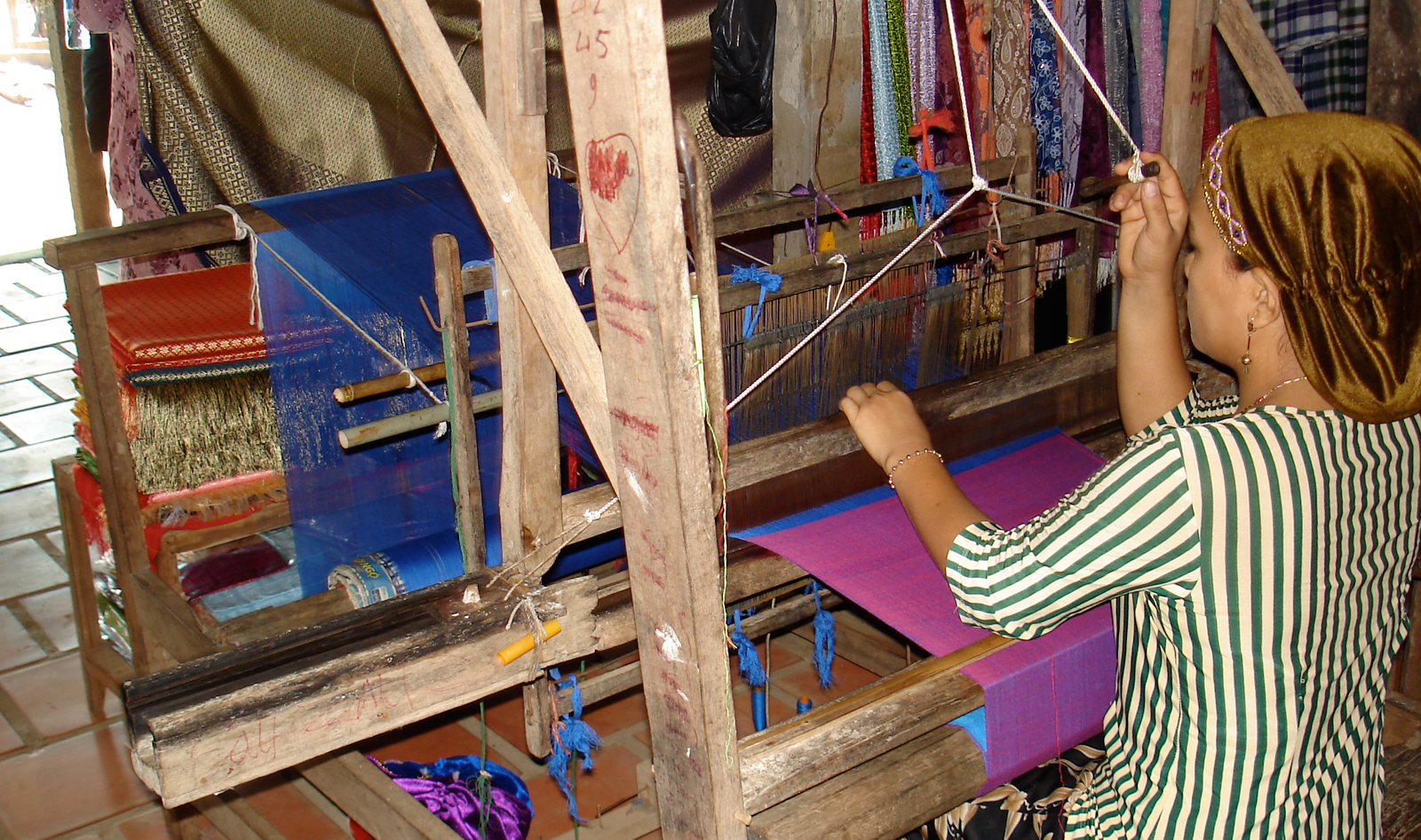
Loom Styles & Weaving Techniques
In Laos, husbands, uncles, fathers, and brothers carve and build the looms for the women.
Materials Used
Laos has two types of silkworms; the yellow that make a softer silk, and white that make a finer silk. Silkworms produce three distinctly separate layers of silk: the outer layer is roughest (mai peurk), the middle is medium (mai kang), and the part closest to the worm is the finest (mai nyod). These layers can be separated as the silk is unwound, or all combined for a "medium" or mixed silk (mai sao louan) thread.
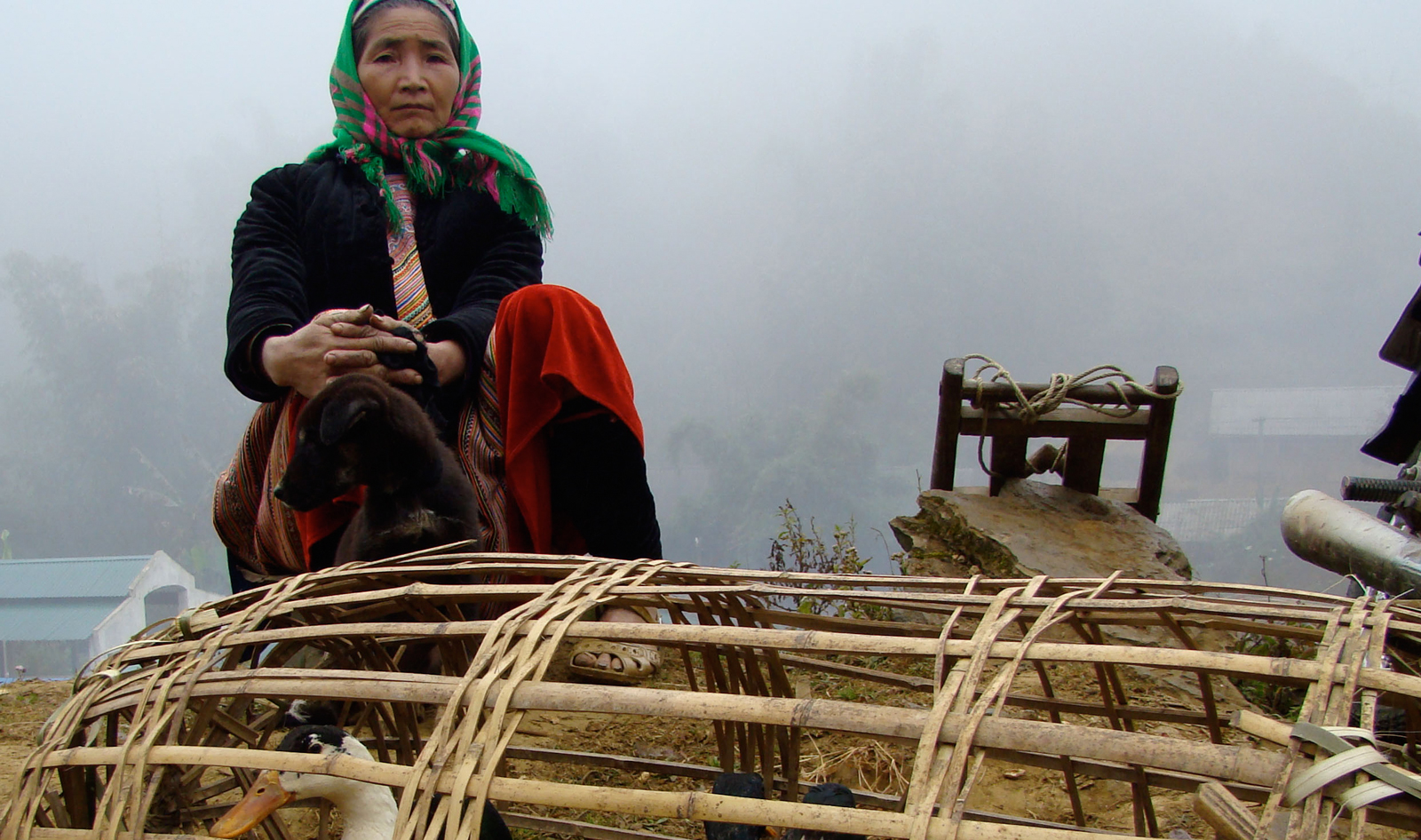
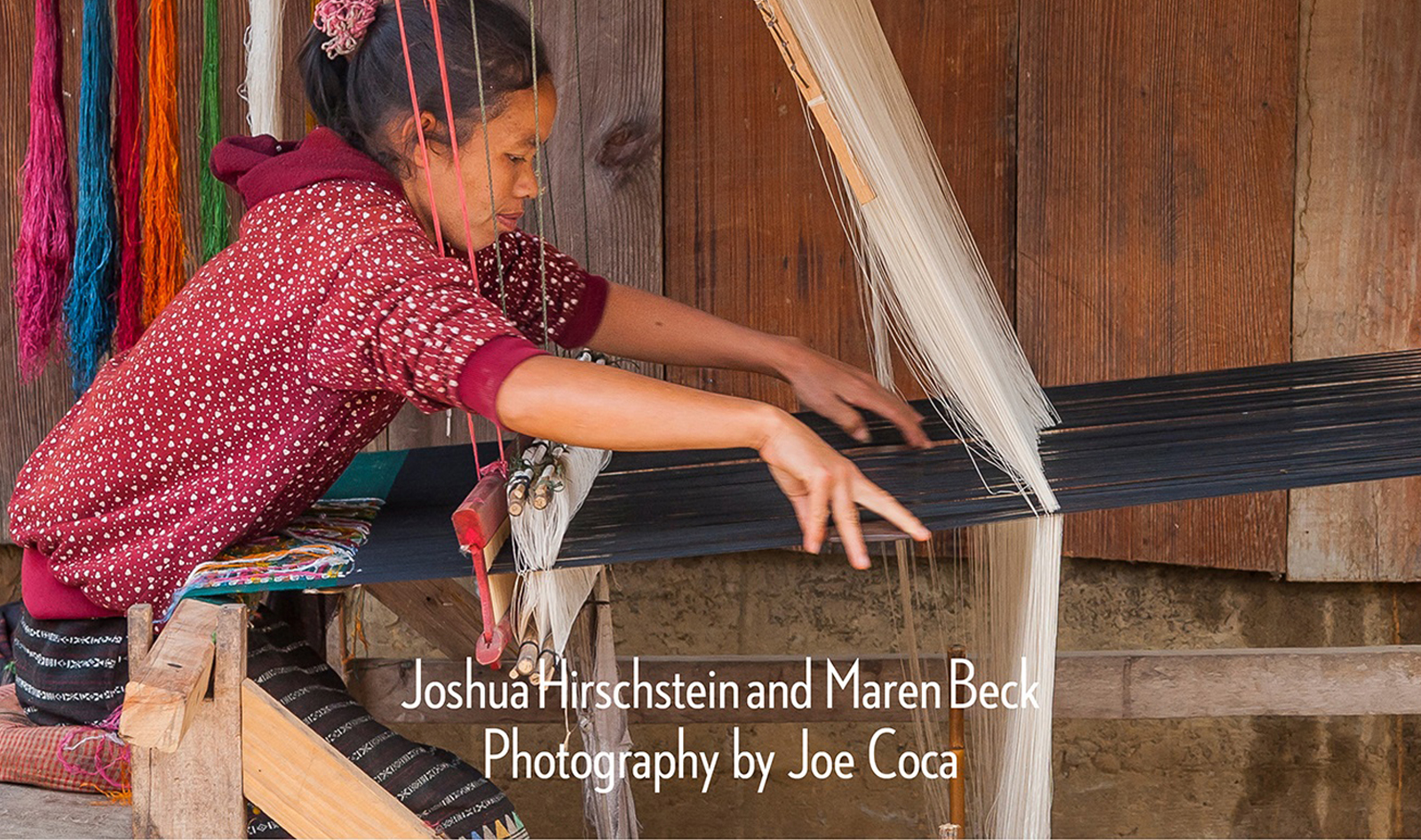
Recommended Books on Traditional Hilltribe Art of Laos, Vietnam, and Southeast Asia
If you are as intrigued and awed about the art, cultures, customs and artists presented on our website as we are, we highly recommend the books listed here. Many of the following publication are out-of-print or published overseas.
